Yucca: types, planting and care in the open field
Growing yucca on personal plots, gardeners in Russia have been engaged in a long period of time. The original homeland of the plant stood out as tropical or subtropical forests with sharp changes from high humidity to a sharp abnormal heat.
Natural climatic conditions are perfectly repeated in different parts of the native country. Therefore, yucca has taken root well in any area of Russia. But for this, in order to grow a gorgeous shrub behind the plant, specific care should be taken and protected in severe frosts, covering it well.
Content:
- Types of garden yucca and their description
- How does yucca breed?
- Terms and rules for planting a plant
- Everything you need to know about leaving
- Possible growing problems
- Where and how can you use yucca on the site?
Types of garden yucca and their description
Yucca is a plant from the genus of asparagus, evergreen type. The appearance of the American representative resembles Mediterranean agaves. But unlike the latter, in yucca the leaf plates are obvious. The foliage is quite dense, each leaf is arranged in a spiral order, tightly fitting to the adjacent leaf.
If we compare the yucca grown at home in a flowerpot and an open field plant, then the latter does not have an erect stem, which is present in an indoor flower. A shrub of an open area is endowed with a dense rosette extending directly from the rhizomes.
A flower spike appears in a shrub under favorable conditions.
The inflorescences on the stem are located in the form of drooping bells and look like a large panicle. The stem of the plant extends 1.5-3 m upward above the central rosette of leaf plates.
For open ground for planting in a personal plot, only two types of all varieties are used:
- Filamentous - a frost-resistant shrub can withstand a drop in temperature to -25 ..- 30 C. The plant stretches up to 70 cm, while the foliage has a pointed appearance. Lance-shaped foliage with pointed ends, on which there are a large number of small villi. The peduncle stretches upwards by 1.5-2 m. Drooping beige inflorescences with a whitish tint are formed on it.
- Gray-gray - foliage can grow up to 70 cm. Just like filamentous, curly pile is located at the edges of the leaf plates. Leaf width is much narrower than that of filamentous yucca. The trunk is not formed, foliage grows immediately from the rhizomes. The bush does not differ in strong frost resistance, it can withstand frosts up to -20 C. The plant is distinguished by beautiful, high arrows reaching 3 meters with bright yellow inflorescences.
Thus, in the environment of changeable climatic conditions, only 2 types of exotic yuccas have adapted to survive. The main thing for growing is to know how the plant is planted in open ground and to take proper care of the shrubs.
How does yucca breed?
Yucca propagation occurs in several ways. The following breeding methods are distinguished:
- The easiest way to get a daughter plant is to divide the bush. This method can be carried out when transplanting a bush.The grown yucca bush is recommended to be replanted in the spring months - April or May. Processes with formed rhizomes are carefully separated from the mother liquor. The resulting young shoots are planted in a new place of residence and thoroughly watered. For them, more careful care should be taken - shade in the first days after planting from bright sunlight, water more often, but in moderation and be sure to feed. Gardeners recommend planting young seedlings from the mother plant once every 3-4 years.
- Plant propagation is also done seeds, but in the climatic zone of Russia, it is not possible to achieve the appearance of planting material by ripening the formed fruits. This is due to the fact that in natural conditions the plant is pollinated with the help of specific butterflies. They differ in that they come from the Pronuba genus and live only in the historical homeland of the plant. They are necessary to pollinate the flower stalk and provoke seed ripening. In addition, the cultivation process from the obtained seed material is revealed to be quite laborious and time-consuming. Seedlings are harvested in August after ripening, and planting takes place only in February. At the same time, the grown yucca can be moved into open ground only 2 years after the first shoots appear.
- For stem propagation, the best rooting period is spring. The upper part of the main stem is used as a planting material. The sprout should be cut from the bush at an acute angle. Its length should not be excessively increased. The larger the sprout, the more difficult and problematic it will be to take root. A fresh cut should be sprinkled with crushed activated carbon. The lower leaves should be removed, leaving only 4-5 plates from the very top. After that, the plant must be slightly dried for up to 20 minutes. The stalk is planted in moist soil, so that it is deepened into the ground by no more than 7 cm. The distance from a neighboring seedling should not be less than 4-5 cm. Greenhouse conditions are created for faster germination of root shoots.
- The last way to root yucca is propagation by root cuttings. To do this, the plant that is going to be planted separately on the stem must have dormant buds. A cut cutting is spread into the prepared soil, not exceeding 10 cm in length. The lower edge of the seedling is slightly pressed into the moist soil substrate. It is recommended to lightly spray the planting every day, slightly moisturizing. Within 15-20 days, dormant buds will begin to wake up, from which young seedlings will subsequently form. After the formation of rhizomes in each shrub, the cutting is removed from the soil and separated from each other, while the cuts are treated with ash. The last stage of obtaining a new plant is transplantation to a permanent place of residence.
Thus, garden yucca can be propagated in different ways. The main thing is to ensure that the plant takes root correctly, does not rot. To eliminate the acquisition of diseases by the cuttings, all sections must be treated with wood ash or activated carbon.
Terms and rules for planting a plant
In most cases, a tropical shrub is transplanted either in August or at the beginning of September. It is better not to carry out spring planting work, they can significantly undermine the plant's immunity and slow down its development. The only thing is, if the seedling is purchased in the spring, then it is more expedient to immediately plant it in a new place of residence, having previously changed the soil.
For a correct fit, it is recommended to follow a number of rules:
- The plant needs sunlight. It is necessary to choose a place where the shrub will not be shaded by other horticultural crops and will draw out all nutrients and moisture from the soil.
- Do not plant the plant in the lowlands. Yucca does not like an excessive abundance of moisture and forced stagnation of water after the melting of spring snow, which accumulates in depressions.
- The rooting pit is prepared according to the size of the seedling. If a large plant, 3 years old, is being prepared for planting, then the hole should be dug at least 40-50 cm in depth, and the width should be left up to 110 cm.
- After transplanting the plant to a new place of residence, it is required to feed in 2-2.5 weeks using complex fertilizer.
It is imperative to eliminate all rotten, damaged or dried sheet plates during planting work. But the procedure should be carried out very carefully due to the fact that the foliage is dense and can injure the skin of a person.
Everything you need to know about leaving
Garden yucca, regardless of species, is not a capricious plant:
- The only requirement of the shrub is the absence of excessive moisture. In order for the bush to develop well and actively, it is recommended to make periodic moderate watering. Additional nutrient moisture should not be added if the plant is in moist, not yet dry soil. The need for additional recharge is revealed at the moment when the leaves of the bush have drooped, and the pile has sagged along the edges. When the leaves wilt, they can be slightly sprinkled with water from a spray bottle. But this procedure should be carried out either early in the morning or late in the evening, at a time when the sun's rays do not touch the upper surface of the leaf plates.
- In order for the yucca to grow and develop quickly, periodically pleasing with its flowering, the bush should be fed. The event should be held during the spring months when there is strong growth. Suitable as top dressing mineral fertilizers, liquid compost or humus. In addition, foliar feeding should be carried out. To do this, it is necessary to spray the plant from a spray bottle, on top of the foliage.
- The types of yucca that can grow in Russia are quite frost-hardy, therefore, in the southern regions and central parts, the plant can not be covered. But in the North, Siberia and the Urals, it is advisable to carry out procedures to shelter the plant. Any covering material such as film, spunbond or agrospan will work. Be sure to mulch the root surface of the plant. You can use dry crushed peat, humus or dry fallen leaves.
Possible growing problems
Yucca, like any other plant, can be attacked by disease-causing bacteria and parasites. Harmful individuals wishing to settle on the holly bush are whiteflies, spider mites, scale insects, mealybugs. In addition, the bush can be invaded by slugs and garden snails.
To get rid of parasites, it is recommended to use a manual method of collection and destruction with a small number of settled pests. Otherwise, it is recommended to resort to exposure chemical insecticides.
In addition, if the rules for the care and cultivation of the plant are not followed, pathogenic bacteria can settle on the leaves and rhizomes of the yucca. There are the following diseases, often observed on a pointed bush:
- Stem rot - foliage becomes wilted, lethargic, not viable. Formed by frequent waterlogging and lack of air in the soil. With minor damage, the affected area is cut off. Otherwise, it is recommended to completely get rid of the diseased specimen.
- The mottling is yellow - small specks of a yellow tint appear on the foliage. Aphids become the causative agent of the disease. Influence the plant to eliminate pests.
- Anthracnose - brown spots with convex edges and a yellow edging around the edges appear on the leaf plates. The mottling appears unevenly along the leaf and merges into a single structure. Remove affected foliage, reduce watering and remove irrigation. If you need to process chemical fungicides.
So that the plant does not undergo diseases or its leaves do not turn yellow, you should carefully monitor the care of the plant, not only in the room, but also in the open air. Although yucca does not require excessive care and constant monitoring, if you do not pay attention to it at all, it can become seriously ill.
Where and how can you use yucca on the site?
If you place a yucca on a personal plot, it will only one of its kind will dispose to rest and place a person on the Mexican prairies and tropical thickets of Africa.
In addition, the specific appearance of the plant, reminiscent of a palm-like appearance, gives the plant a resort look. The plant can be placed on gravel or in arid places to decorate alpine slides.
Also, the bush looks advantageous on a terracotta design or in solitary plantings.
If the yucca is placed on a vast territory in a single copy, where there will be no additional natural additions, then during flowering the plant will resemble a kind of fireworks. This appearance will not leave anyone indifferent.
Thus, yucca it is planted not only indoors, but also outdoors. It can be propagated in various ways, except for seed, which cannot be done in the conditions of our homeland. The main thing is that the plant develops well, it is necessary to perform certain care. Otherwise, there is an opportunity to acquire problems with the cultivation of the bush.
More information can be found in the video:




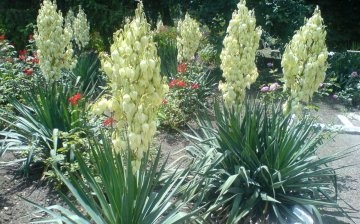

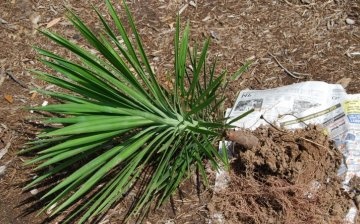
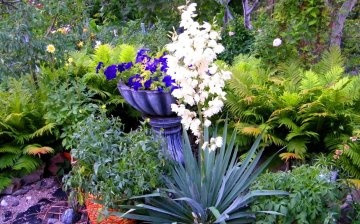
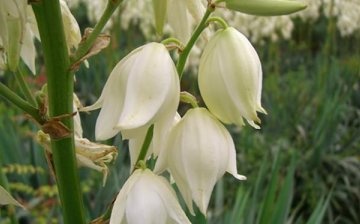









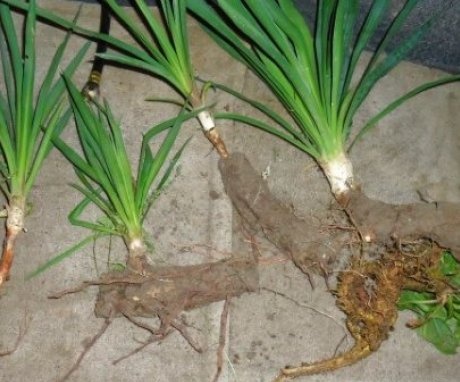



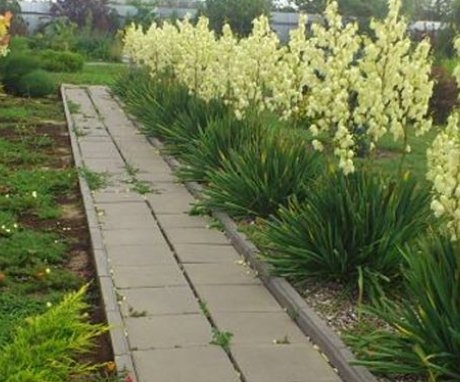
Interestingly, I never thought that in our conditions you can grow yucca just in the open field. And if you also bring it to flowering, caring with love, - a holiday of the soul will turn out. Perhaps you need to explore your possibilities while waiting for the cultivation of exotic.
My God, what a beauty! I've never seen anything like it. Is it really possible to grow such a charm in our plots. At home, they grow well and decorate our apartments, but I have never seen such a miracle on the site.